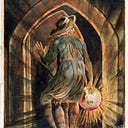Member-only story
“Let them daydream”
“Imagination has no age and dreams are forever”, Walt Disney
According to Walter Isaacson, “Albert Einstein relished what he called Gedankenexperimente, ideas that he twirled around in his head rather than in a lab. That’s what teachers call daydreaming, but if you’re Einstein you get to call it Gedankenexperimente.”
Isaacson writes, “As Einstein’s thought experiments remind us, creativity is based on imagination. If we hope to inspire kids to love science, we need to do more than drill them in math and memorized formulas. We should stimulate their minds’ eyes as well. Even let them daydream.”
When Einstein was about 16 he tried to picture what it would be like to travel so fast that he caught up with a light beam. For Einstein what is “simultaneous” is relative, depending on your state of motion. This relativity of space and time became known as the Special Theory, because it applied only to a special case: an observer moving at a constant velocity.
On four consecutive Thursdays in November 1915, Einstein laid out his General Theory to the Prussian Academy of Sciences in Berlin. In his final lecture, on Nov. 25, he produced the equations that describe the gravitational-inertial field. One of the final variations of Einstein’s equations is written as: “Rμν — ½ Rgμν = 8 π G Tμν”
Isaacson explains:
- The left side of the equation describes how objects warp and curve the geometry of space-time.
- The right side describes how this…
